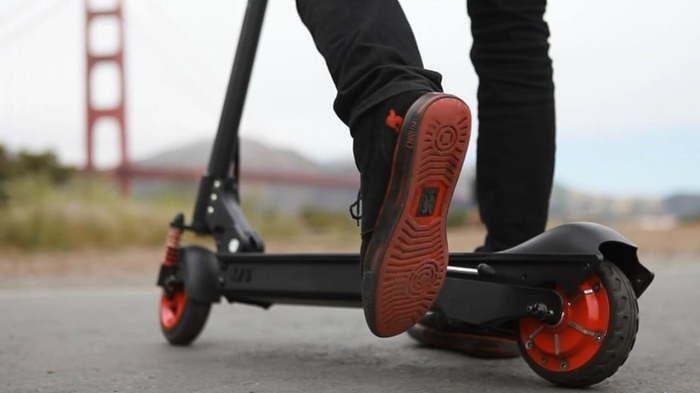Electric scooters, the fashion that doesn't appeal to Latin America
Although they came as a promise of mobility for Latin America's congested and polluted cities, electric scooters have faced a path of accidents, slow regulations, and the opposition of residents.

Annual global growth rates in sales of electric skateboards or scooters will be on the order of 6.5% between 2020 and 2025, which will make it a sector that will move about 22,500 million dollars, according to the market research firm Research and Markets. But that boom is playing against another related business: the rental of these devices, especially in Latin American cities, as a solution to micro-mobility.
With such market records, the decision taken by U.S. firm Lime, which in early January this year announced it was pulling out of business in cities like Bogotá, Buenos Aires, Montevideo, Lima, Puerto Vallarta, Rio de Janeiro, and Sao Paulo in Latin America, as well as Atlanta, Phoenix, San Diego and San Antonio in the United States, and Linz, Austria, came as a surprise.
"Part of the realization of our vision to transform urban mobility is to achieve financial independence. That's why we shifted our primary focus to profitability. While the vast majority of our more than 120 markets have adopted micro mobility transportation solutions quickly and are profitable, there are selected communities around the world where this model has evolved more slowly," Brad Bao, CEO of Lime, responded in a statement shared by the company to Yahoo Finance.
It was surprising in his statement that he mentioned a slower evolution of the model, considering that, as Colombian journalist Felipe Vallejo, an expert in electric mobility, points out, there are companies in the region that can generate up to 15,000 trips per day, a fairly competitive figure in mobility systems that offer users transportation options such as subways, buses, taxis, bicycles, and motorcycles, among others.
However, Lime's decision to completely withdraw its skateboard fleet from Latin America cast doubt on rental market conditions, considering that this company was one of the strongest in the market, with a presence in 120 cities globally, although in 2019, according to The Information portal, it accumulated losses of US$300 million.
Was the market ready for scooters?
Felipe Vallejo questions whether the unusual boom in electric skateboard rentals in major Latin American cities found an immature market that was not prepared for such an offer. Even the expert points to cultural issues that may influence this determination. "The user has to behave well for the service to work, and here they are not used to having responsibility for the vehicle being used.
On the other hand, this market has another danger, and that is that it uses a device that people can access very easily because of its low cost, which can be up to 300 or 400 dollars a unit. When this happens, those users are off the map of potential customers. The business of renting electric skateboards landed in Latin America in 2017, in response to the mobility problems faced by major cities. In addition to Lime, Grin and Grow (now the same company; Grow acquired Grin), Mobike, VBike, and Bird, perhaps one of the strongest companies in the world, emerged.
It is precisely Bird, like other peers in the world like Lyft, that has decided to focus its activities on just a few cities that are more profitable for them. Perhaps, for Vallejo, the unusual arrival of companies offering this service meant that there was an oversupply of rental skateboards in the region, which meant that for competitors the volume of movement was not what they expected, and the volume needed to cover operating costs such as maintenance and spare parts, repairs, refills and equipment losses.
The good and the bad that the electric scooters brought us
Although they came as a promise of mobility for Latin America's congested and polluted cities, electric skateboards have faced a path of accidents, slow regulations, and the opposition of some residents. Suddenly, thousands of these devices appeared in Latin America last year, sent by "micro-mobility" platforms like the American startups' Bird, Lime, and Scoot, the Mexican Grin, or the Brazilian Yellow.
For about half a dollar, plus 10 cents a minute, anyone with a smartphone and a bank card can climb up and leave behind the traffic of some of the world's most bottled cities. Another major advantage, according to their fans: scooters offer a clean transport option in places with high levels of pollution. But critics say these minivans only make road chaos worse.
In Mexico City, with more than 20 million people and nearly five million cars, a man survived in March when he was hit by a car as he drove a scooter in the opposite direction through a central neighborhood. Another similar accident occurred during the early hours of the morning killed a man in the tourist Zona Rosa. In Lima, a woman sustained fractures after being hit by one of these vehicles on the sidewalk in April. In Sao Paulo, from January to May, 125 people were run over. The problems for these vehicles, which reach up to 40 km/h, were just beginning.
As in Europe and the United States, where they arrived first, in Mexico City, Lima, Bogotá, and Sao Paulo there are complaints because skateboards circulate on sidewalks and are parked without any control, blocking the passage of pedestrians and other vehicles. Some of the protests were escalating: in Mexico City, neighbors crossed out the code that allows users to unlock them and immobilized others with stickers bearing the legend "aggressor agent," while in Lima a person threw a scooter on a cliff that blocked the passage.
"Part of the problem in this city is that nobody respects anything," says Oscar Barrio, a 44-year-old Mexico City resident, shortly after leaving his scooter, also known as the "devil's scooter," "well parked" on the sidewalk in downtown Roma. "Let it be seen, let it not get anyone in trouble".
Opportunity for expansion
Scooter companies have seen an expansion opportunity in Latin America. Lime announced that in early July it will begin operations in Sao Paulo and Rio de Janeiro, in addition to Buenos Aires and Lima. Mexico's Grin joined forces with Brazil's Yellow to strengthen its presence in the region. Scooters make it easier to move at peak hours in Latin American cities, which occupy three of the top five places (Bogota, Mexico City, and Sao Paulo) in the list of cities with the worst traffic in the world, according to the specialized firm Inrix.
Meanwhile, a growing middle class in the region has access to cell phones and a means of virtual payment. But conflicts and accidents have forced city authorities to issue guidelines for skateboarding operations. The first thing "is how we can implement mobility of scooters and bicycles, but at the same time ensure the safety of people who use these vehicles," says Ivan de la Lanza, a specialist at WRI, an institution that helps different cities address issues such as sustainable mobility.
"The environment of road insecurity around (the scooter), the high speeds, the lack of regulation in motor vehicles, the lack of safe infrastructure, is what is generating most accidents".
A little bit of culture
In Mexico City, the authorities ordered that, like bicycles, scooters circulate on bike paths or in the vehicle stream and recommended the use of helmets. In addition, they set limits on the number of units each operator can have and established a payment to be made to the capital for each skateboard. For example, both Lime and Grin can have up to 1,750 units.
"We think ( scooters ) are good because they encourage non-motorized travel. We thought to regulate them was the best alternative," says Fernanda Rivera, Mexico City's director-general of road safety. Only in April, Peruvian authorities banned skateboarding on pedestrian streets and set a speed limit of 20 km/h. In Bogotá, the government issued similar rules in addition to the mandatory use of helmets for users.
In Brazil, the government limited speed to 6 km/h in pedestrian areas and 20 km/h on roads designed for cyclists. Despite the rules, scooter enthusiasts in Mexico City are accustomed to conflicts with motorists, pedestrians, and cyclists, and simply ask for more education among the population.
"Unfortunately we need a little bit of culture," says Joaquín Ramos, a 33-year-old engineer who collects and recharges scooters to earn about 30 pesos (1.50 dollars) each. Suddenly, the same people see it and throw it in the middle of the street."




